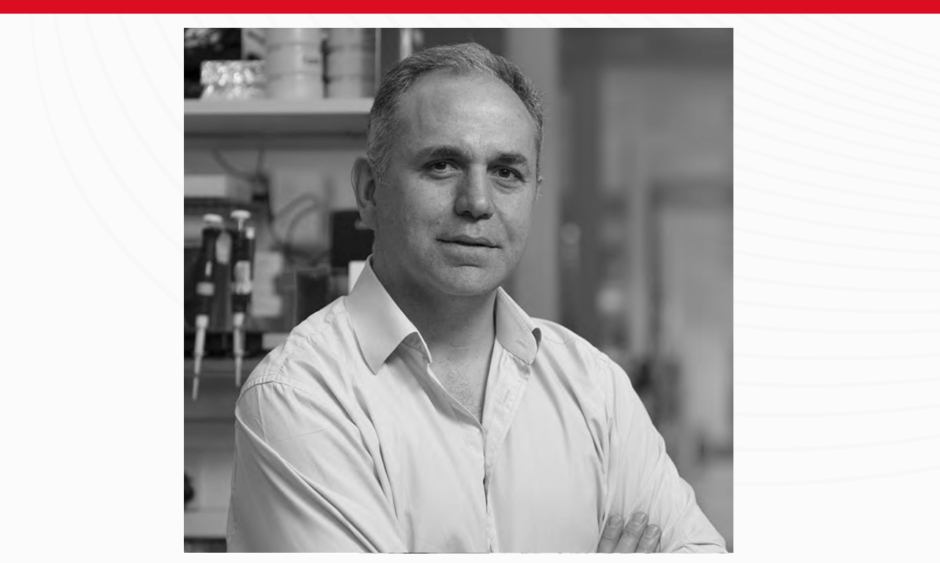What inspired you to become a Professor of Respiratory Biology and how did your teaching career lead you to the University of Cambridge?
I have always been incredibly interested in science and in trying to understand how things work. My first degree was in natural sciences at Cambridge, UK, where I specialised in neurobiology, and this exposed me to the beauty and rigor of basic science. During this degree, I realised that I needed to also train as a doctor to be able to translate clinically relevant scientific discoveries into impact for patients.
Following a PhD in immunology (as part of the Cambridge MB/PhD programme), and time in London combining post-doctoral research with postgraduate medical training, I returned to Cambridge in 2002 as an MRC Clinician Scientist Fellow and then Wellcome Senior Clinical Research Fellow, where I started my lab focused on understanding the interaction between bacteria and the innate immune system. My clinical interest has always focused on difficult bacterial infections (non-tuberculous mycobacteria, cystic fibrosis [CF], and non-CF bronchiectasis) and immunodeficiencies. My current role as Professor of Respiratory Biology (which I’ve held for 7 years) gives me the unique opportunity to align these clinical interests with my basic and translational research programmes.
From professor to research director, you have many important roles and responsibilities. Which role occupies most of your time and what do you enjoy most about it?
I am very fortunate that, despite some leadership responsibilities and management duties, I am still able to spend most of my time in the lab discussing results with my group, planning new experiments over coffee, and helping them problem solve when things don’t go to plan.
As a director of the UK Cystic Fibrosis Innovation Hub, what does your role entail and what are the biggest challenges you have seen in CF research and treatment?
The UK Cystic Fibrosis Innovation Hub is a strategic partnership between the UK Cystic Fibrosis Trust and the University of Cambridge, UK, focused on delivering precision medicine to individuals with CF and overcoming the health challenges that remain despite the introduction of highly effective CF transmembrane conductance regulator modulator therapy. We have three programmes of work based in Cambridge: drug discovery, focusing on creating new antibiotics and anti-inflammatories; stem cell research, developing induced pluripotent stem cells-derived epithelial cells to understand modifier genes and test new drugs, and (in the future) provide cellular therapy; and smart technologies, testing new home monitoring sensors and developing machine learning methods to forecast clinical outcomes. The fourth pillar of the Innovation Hub is to support UK-wide CF research through a variety of training and infrastructure projects. As part of this effort, we are very excited to have received National Institute for Health Research (NIHR) backing to try to DNA sequence the entire CF population in the UK. We hope that this genetic information will provide a huge boost to CF researchers aiming to understand pharmacogenomics and develop new treatments.
One of your current areas of clinical research involves model-based machine learning and respiratory conditions. How do you think machine learning can help predict pulmonary exacerbations in CF?
We have been applying machine learning methods to analyse daily home monitoring data from individuals with CF, originally from our multi-centre feasibility study SmartCare and now from our clinical implementation programme Project Breathe. In collaboration with Microsoft Research, we have now developed a robust predictive algorithm that can forecast the onset of an acute pulmonary exacerbation approximately 10 days earlier than we currently can. We are very pleased to have recently been awarded an NIHR Artificial Intelligence Award to evaluate this algorithm in a randomised controlled trial starting next year.
Can you tell us the story of how you started Floto Lab and the current research you and your team are working on?
I started my lab in 2008 with a small group looking at the innate immune response to bacterial infection. Over the next few years, using a combination of comparative biology and reverse genetics, we identified signalling pathways in macrophages and dendritic cells that could be exploited as host-directed therapy as well as genes that act as restriction factors for specific species of bacteria.
As the group has got bigger, we have been increasingly excited by the bacterial side of this interface and have appreciated the power of population-level pathogen sequencing and forward genetic screens in understanding how bacteria evolve during chronic infection and cause disease. Over the last 8 or 9 years, we have been developing new methods to create antibiotics through combining structure-guided chemical elaboration with machine learning and have been focusing more on the interaction of bacteria with the lung epithelium.
The Phase II clinical trial to treat chronic infection with Mycobacterium abscessus in patients with CF was influenced by you. What were the results of the Phase I trial and were there any limitations or gaps to the research?
M. abscessus infections are extremely hard to treat, with current guidelines-approved regimens (involving months of combination treatment with poorly tolerated antibiotics) curing only about one in three patients. We have been working hard to find other ways to kill M. abscessus and have found, in pre-clinical studies, that acidified nitrite is very effective. Nebulised acidified nitrite appears safe in healthy volunteers, and we are very excited to be starting a Phase IIa study in adults with CF infected with M. abscessus to see the impact of 1 month of nebulised acidified nitrite on their bacterial burden. If successful, we hope to launch a multi-national study of this therapy next year.
Aside from CF, what other respiratory genetic diseases are you interested in and why?
We are really interested in uncovering the genetic susceptibility to developing idiopathic bronchiectasis, meaning bronchiectasis not caused by CF, primary ciliary dyskinesia, or immunodeficiency. We have a very exciting discovery programme of multi-omic research combining whole exome sequencing, single cell RNA sequencing, and functional validation, which is transforming our understanding of the pathophysiology of this overlooked condition.
What advice would you impart on someone who aspires to be an expert in the respiratory field?
Whether your focus is on improving clinical care or on advancing research (whether that be basic, translational, or clinical), you need to strive to understand your specialist area at a fundamental level. It’s only by doing so, that you can appreciate how much of the established dogma is wrong, what areas are unknown, where opportunities lie for research and improvements in clinical care, and what learnings can potentially be applied to other conditions.
A great example is CF. You don’t have to know how CF transmembrane conductance regulator works (or doesn’t work) to practice as a CF physician. But you do need to understand these basics to appreciate how airway surface pH is disturbed in CF or how modulation of the epithelial sodium channel or anoctamin-1 might restore airway surface liquid.







